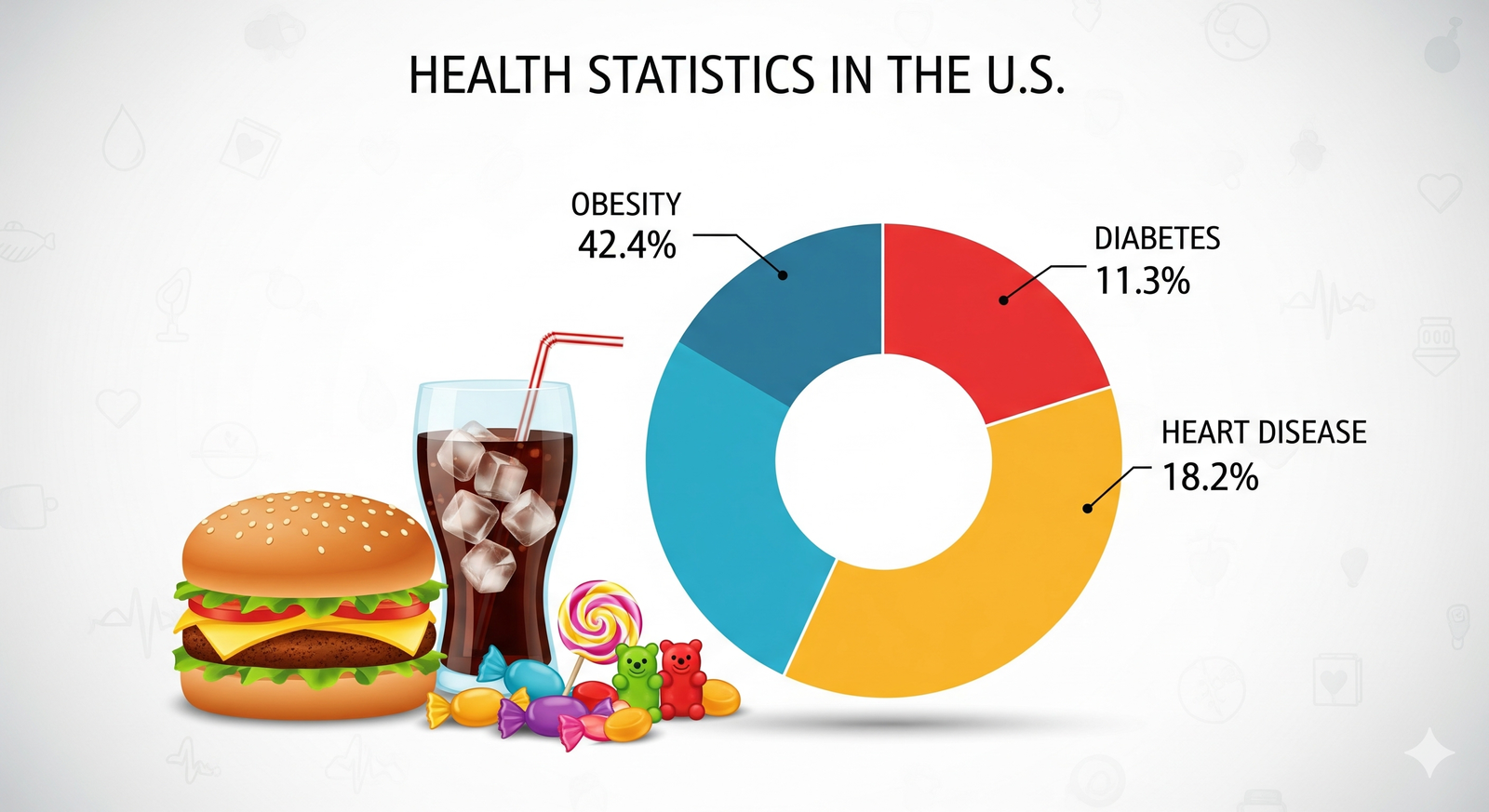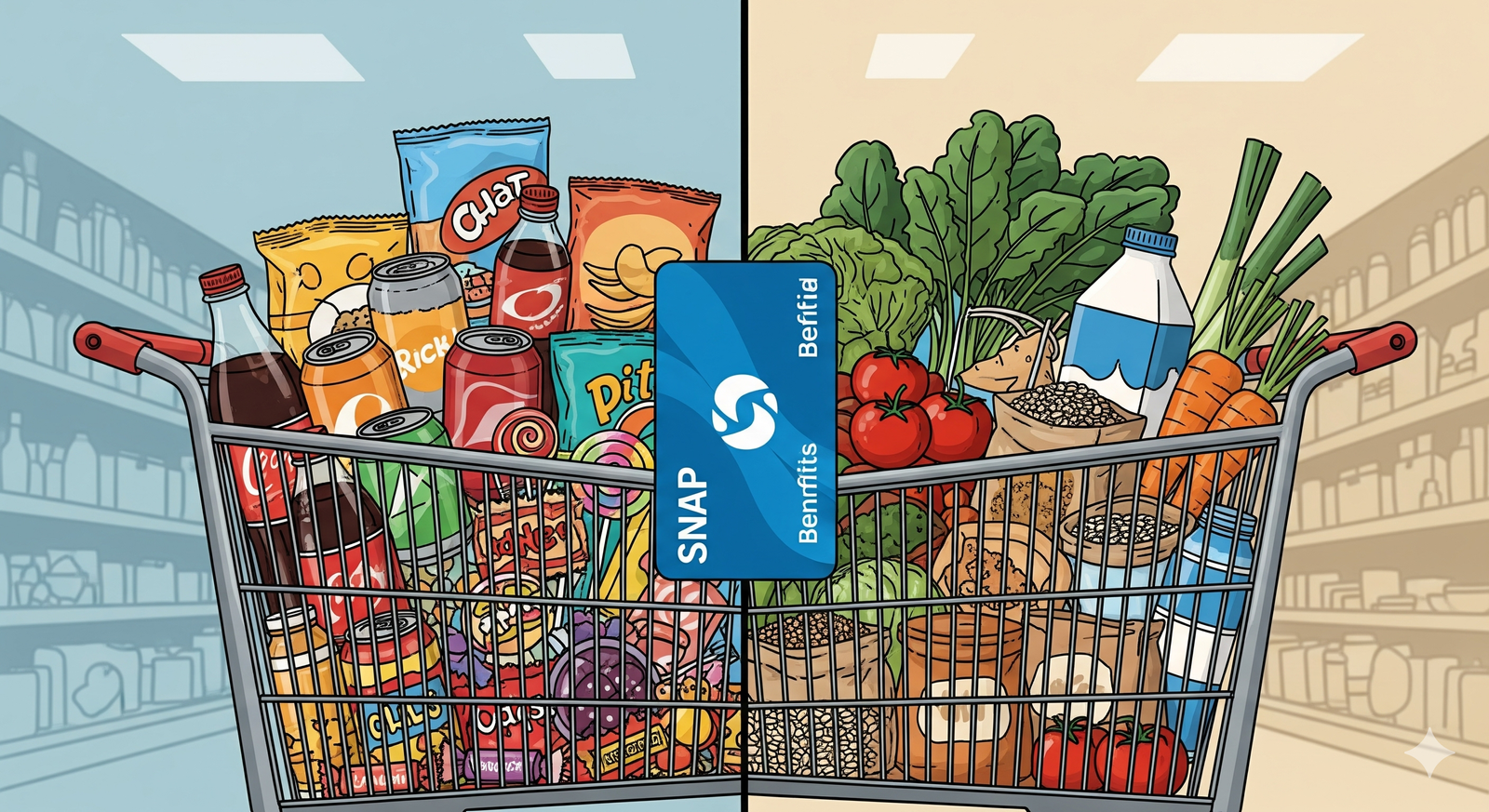Food is more than fuel—it is culture, identity, and the foundation of public health. Yet in the United States, food has also become one of the biggest drivers of chronic disease. Rising obesity, heart disease, diabetes, and childhood health issues are tightly connected to ultra-processed foods, artificial additives, and poor nutrition standards.
Against this backdrop, the Make America Healthy Again (MAHA) initiative has emerged as a new national movement. Spearheaded by Robert F. Kennedy Jr., who currently serves as Secretary of Health and Human Services, MAHA aims to reset the food system—from what children are served in school cafeterias to what companies put on grocery store shelves.
The slogan borrows from the political world, echoing “Make America Great Again,” but MAHA is not about politics. It is about public health, food safety, and nutrition reform. It seeks to answer one of the most pressing questions of our time: Can America break free from its dependence on ultra-processed foods and reclaim a healthier future?
In this article, we’ll explore MAHA’s goals, its major policy shifts, the industry response, and what it could mean for everyday Americans.
Why MAHA, and Why Now?

The U.S. food system has long been criticized for prioritizing profit over health. For decades, lobbying from food giants has delayed or weakened regulations around sugar, artificial additives, and processed foods. Meanwhile, the Standard American Diet (SAD) has contributed to alarming statistics:
- More than 42% of American adults are obese.
- Around 37 million Americans have diabetes, with type 2 diabetes now increasingly seen in children.
- Cardiovascular disease remains the leading cause of death in the U.S.
Much of this stems from the overwhelming presence of cheap, calorie-dense but nutrient-poor foods in the American marketplace. Heavily subsidized crops like corn, soy, and wheat often get turned into sodas, snacks, and fast food instead of fresh, whole meals.
MAHA’s timing reflects both growing public awareness of these issues and the political opportunity created by renewed debates about food safety, corporate responsibility, and healthcare costs.
MAHA’s Key Pillars of Reform

1. Eliminating Artificial Additives and Dyes
One of the most visible parts of MAHA is the crackdown on artificial dyes and additives. The FDA has already announced a phase-out of Red Dye No. 3, linked to hyperactivity in children and possible carcinogenic effects. MAHA goes further, targeting all petroleum-based dyes by 2026.
Major corporations are already responding:
- General Mills pledged to remove artificial dyes from all U.S. products by 2027.
- Kraft Heinz and PepsiCo are testing natural substitutes like turmeric, spirulina, and beta-carotene.
- Starbucks has rolled out new menu standards, dropping dyes, seed oils, and artificial sweeteners while introducing healthier options.
This shift aligns the U.S. with countries like the U.K. and members of the EU, where stricter rules on food additives have been in place for years.
2. Reforming SNAP Benefits

Another core focus of MAHA is reforming the Supplemental Nutrition Assistance Program (SNAP), which helps over 40 million Americans purchase food. Currently, SNAP dollars can be spent on soda, candy, and ultra-processed products. Critics argue that this undermines the program’s mission of alleviating hunger with nutritious food.
MAHA proposes:
- Restricting SNAP purchases for junk food, sugary drinks, and artificially dyed products.
- Incentivizing the purchase of fresh fruits, vegetables, and minimally processed foods.
- Working with states to pilot these changes, with several already applying for waivers.
While some argue these restrictions could limit choice, supporters say the government should not subsidize products that worsen health outcomes and drive up healthcare costs.
3. Improving School Meals

Children are at the heart of MAHA. With millions relying on school breakfasts and lunches, reforming these programs is seen as critical. MAHA advocates for:
- Banning ultra-processed foods and artificial dyes in school cafeterias.
- Offering fresh, whole-food alternatives with better nutritional value.
- Partnering with local farms and suppliers to improve food quality and reduce reliance on processed items.
This effort builds on earlier nutrition reforms but aims to go further by aligning school meals with science-based dietary guidelines and the reality of childhood health challenges.
4. Transparency Through the “MAHA in Action” Tracker

To hold both states and corporations accountable, the HHS launched the “MAHA in Action” Tracker—an online platform that:
- Shows which states are adopting reforms.
- Highlights which companies are changing ingredients.
- Maps out Kennedy’s national MAHA tours and commitments.
By making reforms visible to the public, the tracker serves as both a tool for transparency and a form of political pressure on states and businesses lagging behind.
Industry Reaction: Support and Skepticism

Not surprisingly, MAHA has drawn mixed reactions from the food industry.
- Supportive voices: Many companies recognize consumer demand for healthier products and see MAHA as inevitable. Brands like Chobani, General Mills, and Starbucks are positioning themselves as leaders in compliance.
- Concerns and resistance: Industry leaders warn that reform could raise production costs and alter taste and texture. For example, Chobani’s CEO Hamdi Ulukaya noted that even small ingredient changes—like removing foaming agents—can alter how oat milk behaves in a latte.
This tension reflects the broader challenge of balancing public health goals with industry economics.
Grassroots Energy: The Rise of “MAHA Moms”

Beyond policy and corporate responses, MAHA has ignited a wave of grassroots activism. Known as the “MAHA Moms”, these parents are pushing hard for cleaner school meals, stricter food safety rules, and healthier choices for children.
For them, MAHA is about more than policy—it’s about protecting the next generation from diet-driven diseases.
Yet not all grassroots groups are fully aligned. Some activists fear that while MAHA tackles additives, it may compromise on other protections like pesticide regulation or farm subsidies. This highlights the internal tensions of building a broad reform movement.
Public Opinion and Social Commentary
Public conversations around MAHA reflect both hope and skepticism:
- Optimists see it as a turning point:
“Ultra-processed food is cheap because it’s subsidized. End the subsidies, and we can change the playing field for food production.” – Reddit user
- Skeptics worry about feasibility:
“Unless working families get more time and support to cook healthy meals, policy alone won’t solve the problem.” – Reddit user
This duality captures the central challenge: while regulation can reshape the food marketplace, real change will also require shifts in lifestyle, culture, and economic inequality.
Quick Snapshot: MAHA’s Impact
| Focus Area | Actions & Effects |
| Food Additives & Dyes | Phase-out of petroleum-based dyes; industry moving to natural alternatives |
| SNAP Reform | Restrictions on soda, candy, and junk food purchases |
| School Nutrition | Ban on ultra-processed foods and dyes in cafeterias |
| Industry Response | Supportive but concerned about taste, cost, and consumer acceptance |
| Grassroots Movement | “MAHA Moms” advocating for stronger reforms |
| Transparency | Public MAHA tracker to monitor state and industry compliance |
Challenges Ahead
For all its ambition, MAHA faces serious challenges:
- Industry Lobbying: Powerful corporations may try to water down or delay regulations.
- Affordability: Natural ingredients often cost more, raising concerns about food prices.
- Equity: Will reforms reach low-income families, or will healthier food remain a privilege?
- Political Tensions: Balancing bipartisan support with activist demands could prove tricky.
The ultimate success of MAHA will depend on how it navigates these pressures while keeping public health at the center.
A Turning Point in American Food Culture

The Make America Healthy Again (MAHA) initiative represents one of the boldest efforts in decades to reshape how America eats. By targeting artificial additives, reforming food assistance, improving school meals, and pushing corporations toward transparency, it signals a potential shift from a profit-driven food culture to a health-first food culture.
If MAHA succeeds, the next generation of Americans could grow up in a world where junk food is the exception, not the norm—where fresh fruits, vegetables, and real food replace artificial dyes, sugary sodas, and processed snacks.
“The health of a nation depends not on corporate wealth, but on the food on its people’s plates.” – Robert F. Kennedy Jr.
U.S. Department of Health & Human Services (2024). Make America Healthy Again: Food Reform for a Healthier Future.